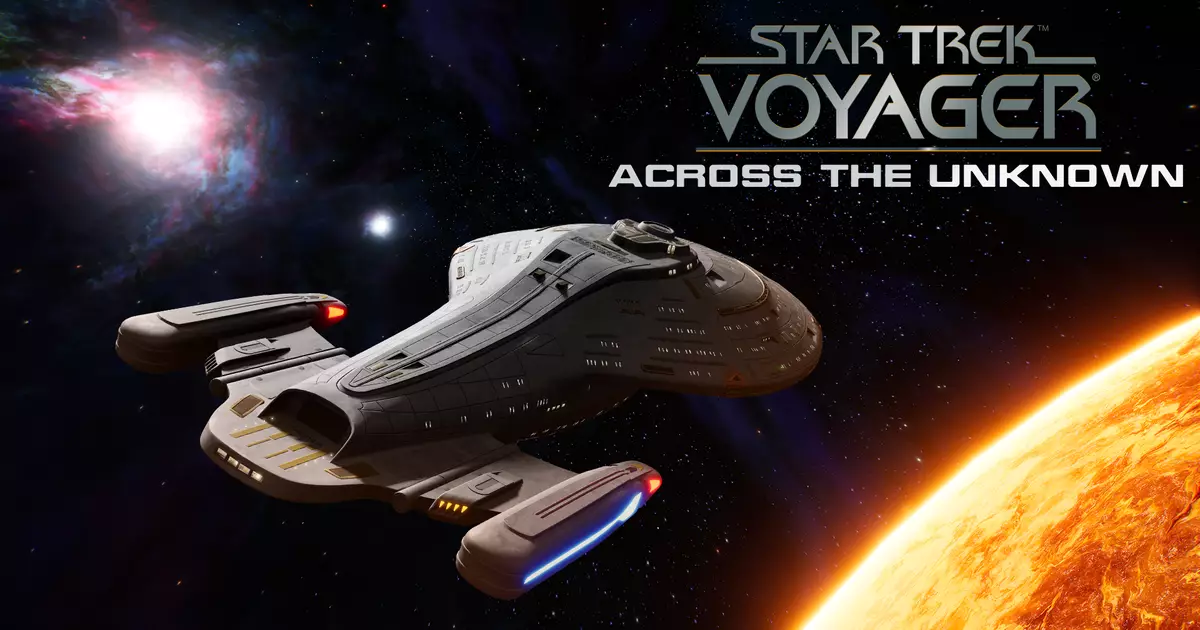Star Trek fans have every reason to be both excited and cautiously optimistic about the upcoming release of “Star Trek: Voyager – Across the Unknown.” This upcoming game offers a fresh approach to beloved sci-fi universe, transforming the centuries-old saga into an interactive experience that combines survival strategies, resource management, and moral complexity. The game’s premise—set on the battered U.S.S. Voyager in the uncharted Delta Quadrant—invites players to step into the shoes of Janeway and her crew, navigating unfamiliar territory through a lens that emphasizes player choice and emergent storytelling. The developers, gameXcite, aim to blend traditional Star Trek optimism with the gritty, high-stakes tension of roguelite mechanics, suggesting a game that celebrates both nostalgia and innovation.
What stands out immediately about this project is its audacious scope. Rather than simply retreading familiar storylines, it seeks to inject new life into the Voyager mythos by offering what-if scenarios that could tilt the balance of this iconic universe. Do you dare to imagine Janeway as Borg Queen, or the Doctor as captain? These provocative ideas signal a willingness to experiment with narrative boundaries, an aspect that could breathe fresh vitality into a franchise that, despite its enduring popularity, risks stagnation if it sticks too rigidly to its well-worn tropes.
The Heart of the Gameplay: Choices, Consequences, and Crew Dynamics
One of the most compelling features of “Across the Unknown” is its emphasis on player agency and the weight of decision-making. Unlike constrained linear stories, this game promises meaningful choices—diplomacy versus combat, research versus suppression—and each decision carries tangible risks and rewards. This is where the roguelite elements become particularly intriguing. Each run offers a different set of challenges, fostering replayability and encouraging tactical thinking. The possibility of iconic characters meeting untimely ends adds a layer of emotional investment and unpredictability that can elevate the gameplay experience beyond traditional management sims.
Furthermore, the game’s emphasis on crew management and relationship building suggests that success hinges not merely on technological upgrades but on understanding and nurturing the crew’s morale and skills. The away missions—where players select teams based on their unique abilities—add an exciting layer of tactical depth. Do you assemble a well-rounded team and play cautiously? Or do you push the crew into dangerous situations, risking casualties for the chance at rare discoveries? Here lies the essence of Star Trek: navigating moral gray areas while striving for survival.
The Visuals and Mechanics: Nostalgia Meets Innovation
From the snippets available, the game ambitiously fuses nostalgia with modern mechanics. The spaceship’s cutaway dollhouse view and the HUD resembling a Star Trek bridge display evoke immediate recognition among fans, offering a familiar yet fresh interface. The base-building component, reminiscent of XCOM: Enemy Unknown, introduces a strategic layer that allows players to expand and customize Voyager’s internal facilities. This integration of resource management into a sci-fi setting is a clever way to deepen player engagement.
On the flip side, the game’s miniature, top-down traversal of solar systems feels somewhat diminutive—a stark contrast to the vastness of space that Voyager traditionally embodies. Instead of immersive space battles or sprawling explorations, it suggests a somewhat constrained experience, which might diminish the grandeur that fans expect from a space epic. Whether this design choice is a temporary compromise or a missed opportunity remains to be seen, but it’s an aspect that will need careful refining to truly capture the wonder of the Delta Quadrant.
Bravely Navigating the Unknown
Ultimately, “Star Trek: Voyager – Across the Unknown” holds the promise of transforming a beloved saga into a dynamic, player-driven adventure. While it clearly leans heavily on nostalgic triggers—fandom shout-outs to Chakotay, Seven of Nine, and Harry Kim—the potential to redefine classic scenarios within a strategic framework offers a compelling new lens through which to experience Voyager. Whether this game succeeds in balancing its roguelite mechanics, narrative innovation, and visual style will determine its place among the pantheon of must-play sci-fi titles.
As a fan, your feelings are likely a complicated mix of excitement and skepticism—an understandable response to a franchise with so much history. But if the developers can harness the franchise’s spirit of exploration, moral challenge, and camaraderie, this game might just chart a bold new course that honors Voyager’s legacy while boldly venturing into uncharted gaming territory. Critics might caution that the game’s mechanics could feel superficial or that it risks reducing a richly detailed universe to a series of grindings and decision points, but with enough nuance and storytelling ambition, it can transcend those limitations and become a landmark in sci-fi interactive storytelling.

